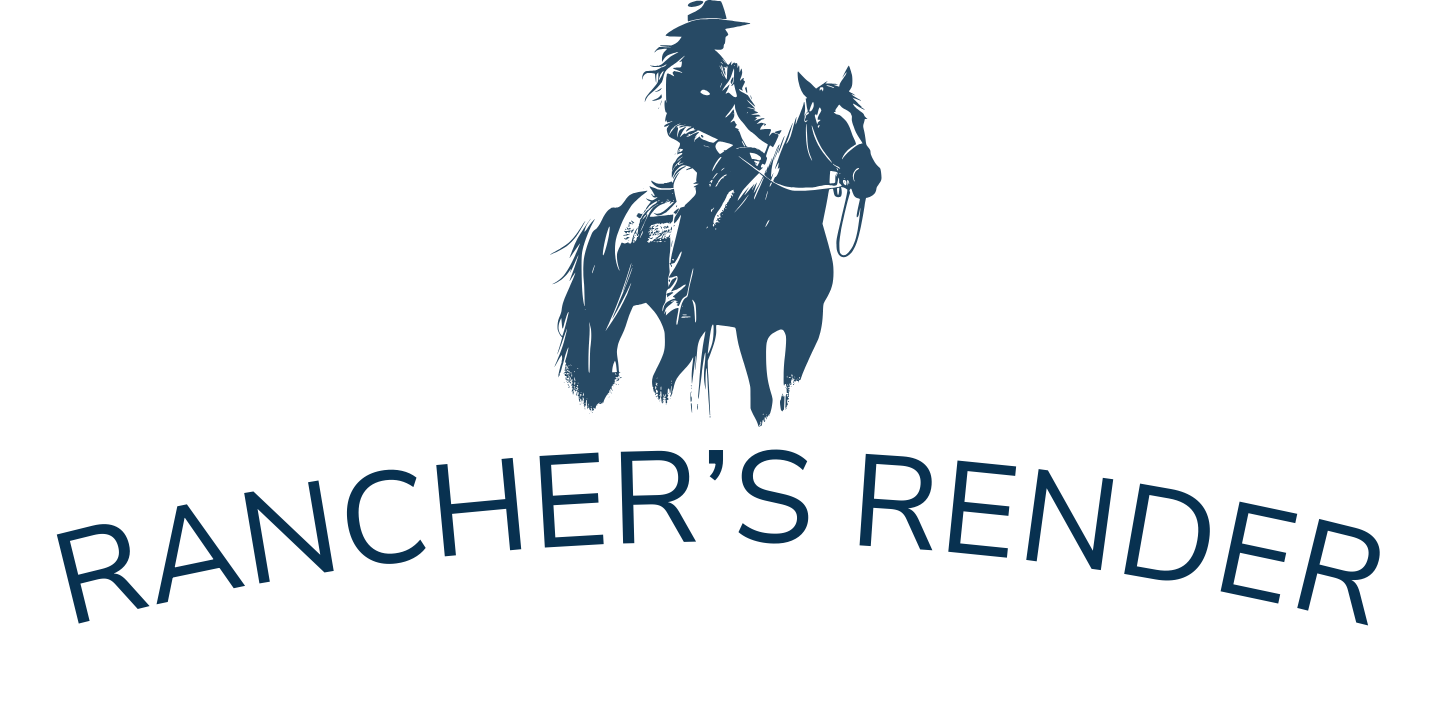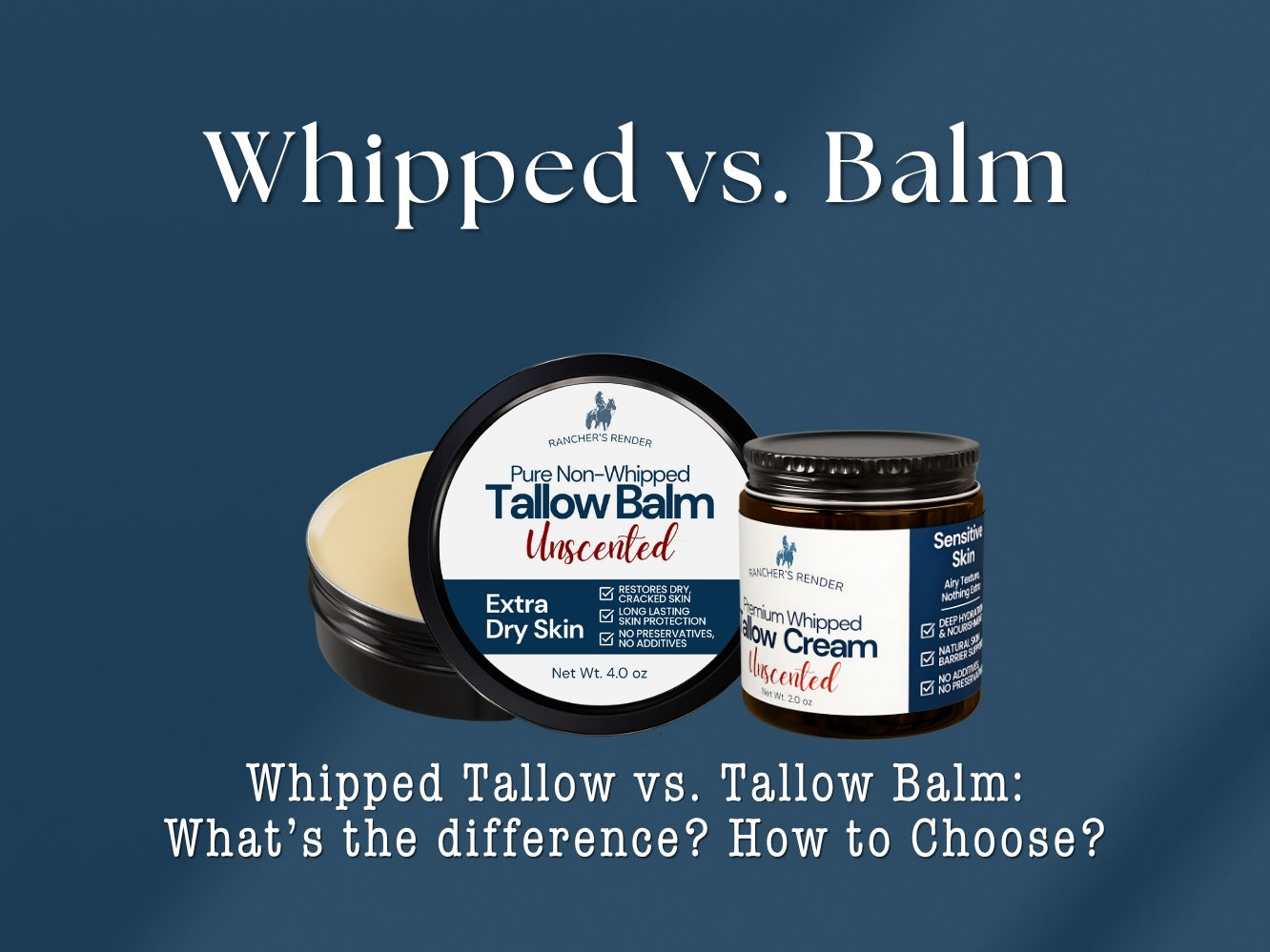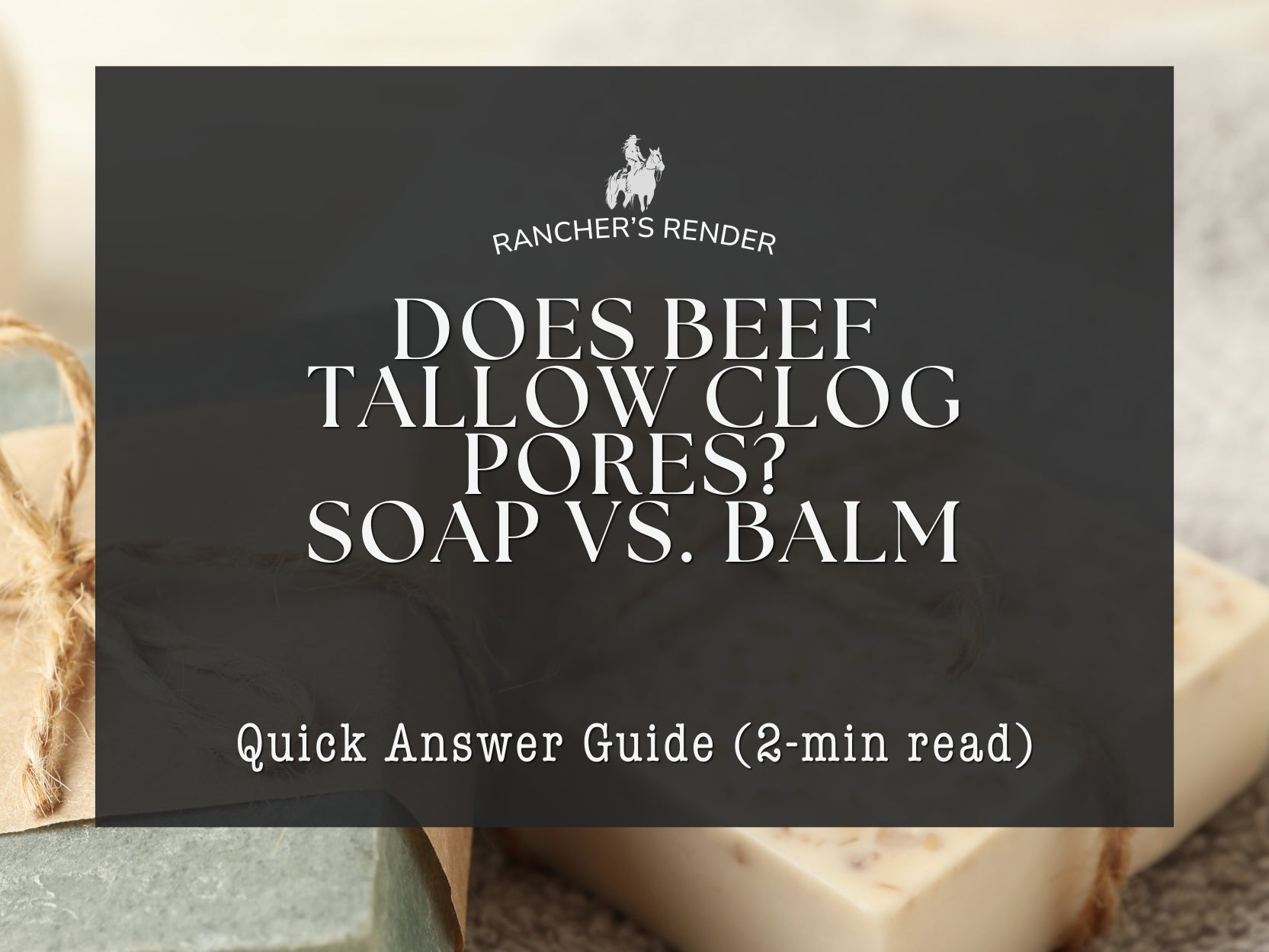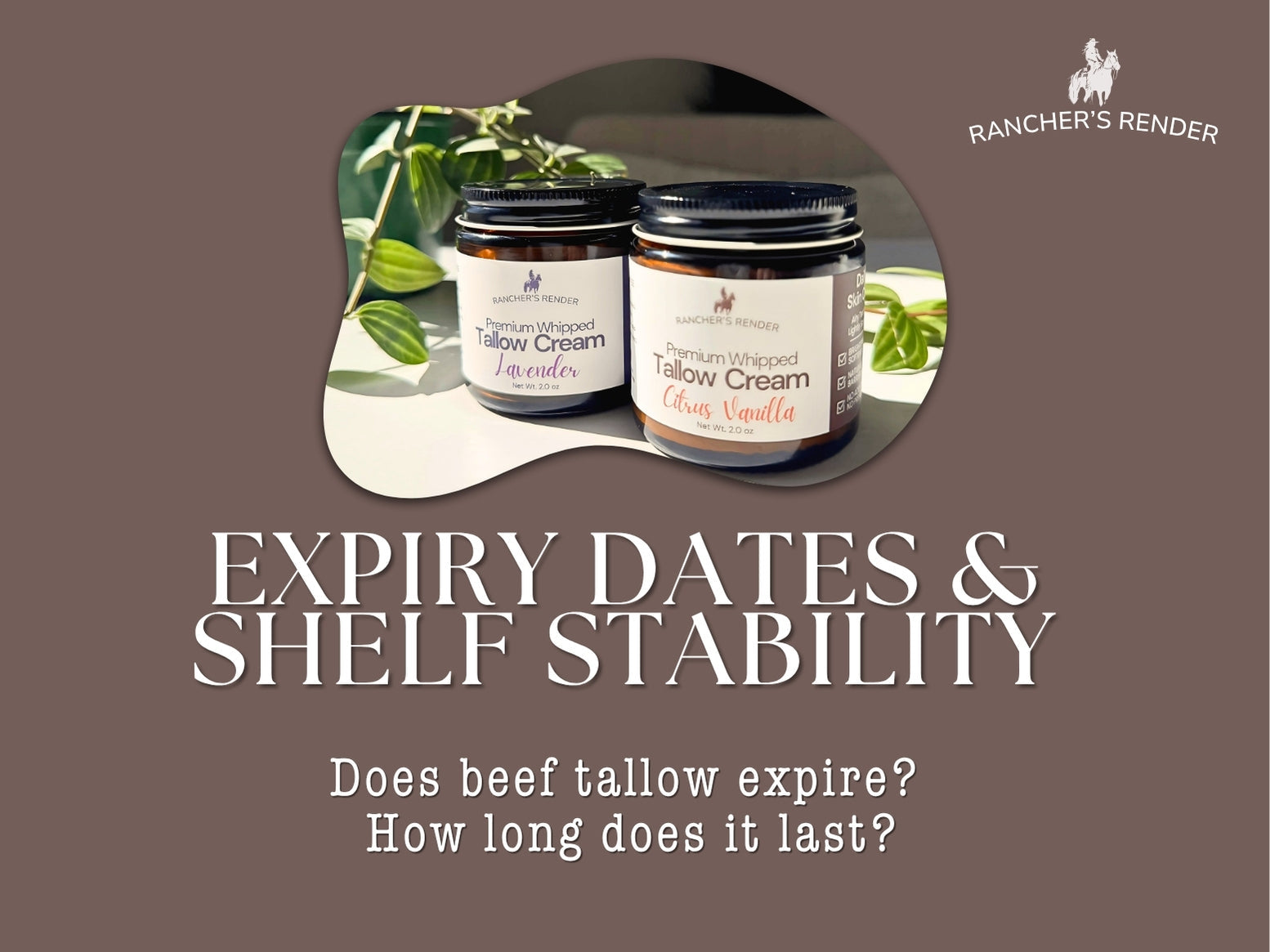If You've Been Told Beef Tallow Will Either Cure or Destroy Your Acne
If you've been told beef tallow will either cure your acne or destroy your face, you've been talking to the wrong people. The truth is more interesting—and more useful—than either extreme. It turns out the FORM of tallow matters more than the tallow itself.
After years of rendering tallow at our ranch and hearing from thousands of customers, we've learned something crucial: the same person who breaks out from tallow balm might thrive with tallow soap. The difference isn't magic or marketing. It's chemistry, quality, and knowing exactly how to use it.
This guide cuts through both the hype and the fear-mongering to give you practical, tested advice on using tallow soap for acne-prone skin. No miracle claims. No scare tactics. Just honest information about what works, what doesn't, and how to figure out which category you fall into.
Understanding Beef Tallow for Acne: The Basics
What Happens When Acne-Prone Skin Meets Tallow
The relationship between beef tallow and acne isn't simple, despite what social media wants you to believe. Tallow has a comedogenic rating of 2 out of 5—technically "low to moderate" risk for clogging pores. For context, that's the same rating as jojoba oil and olive oil, both considered relatively safe for most skin types.
But here's what the ratings don't tell you: how you use tallow matters more than the rating itself. A rating of 2 means different things when we're talking about:
- A 10-second wash with soap
- An 8-hour occlusive layer of balm
- A whipped cream applied to damp skin
- A cheap trim-fat product full of impurities
The surge in "beef tallow for acne" searches—up 180% this year—reflects genuine confusion. People are getting wildly different results because they're using wildly different products, all called "tallow." It's like comparing apples to apple pie and wondering why they affect your stomach differently.
Your acne-prone skin has specific needs: balanced cleansing without stripping, moisture without occlusion, and absolutely nothing that feeds bacteria or blocks pores. Whether tallow helps or hurts depends entirely on which form you choose and how you use it.
The Critical Distinction Most People Miss
Here's the game-changer most people don't understand: tallow soap and tallow balm are chemically different substances. They're not even close to the same thing.
When tallow becomes soap through saponification (mixing with lye), the fat molecules completely restructure. The triglycerides in raw tallow transform into sodium tallowate—a surfactant that cleanses rather than coats. This isn't marketing speak; it's basic chemistry.
Raw tallow (in balms):
- Sits on your skin for hours
- Creates an occlusive barrier
- Can trap bacteria and dead cells
- Contains 35-47% oleic acid that might disrupt your barrier
Saponified tallow (in soap):
- Contact time: 10-60 seconds
- Rinses completely away
- Actually removes pore-clogging debris
- Transforms into cleansing molecules, not coating fats
Think of it this way: butter and buttermilk both come from cream, but you wouldn't spread buttermilk on your toast. Similarly, tallow soap and tallow balm might start from the same source, but they interact with your skin in completely opposite ways.
Contact time alone changes everything. Even if soap had the same comedogenic potential as balm (which it doesn't), the difference between 30 seconds and 24 hours of exposure is the difference between cleaning your pores and clogging them.
What Dermatologists and Science Say About Tallow and Acne
The Research Reality Check
Let's be brutally honest: there are exactly zero clinical trials specifically testing beef tallow soap on acne. The most recent 2024 review of tallow skincare found "significant research gaps," particularly around acne effects. We're working with educated guesses based on chemistry, clinical observation, and centuries of use.
What we do know:
- A 2024 study of 78 people using tallow-based products showed antimicrobial effects
- Tallow's fatty acid profile has both helpful and potentially problematic components
- The similarity to human sebum can be good (biocompatibility) or bad (adding oil to oily)
- Individual responses vary enormously based on genetics, microbiome, and environment
Most dermatologists remain cautious about animal fats for acne-prone skin. As one board-certified dermatologist noted, there are "many well-formulated, evidence-based skincare products with proven safety profiles" specifically designed for acne. Translation: if you have severe acne, see a dermatologist for proven treatments first.
But—and this is important—dermatologists also acknowledge that gentle cleansing without stripping natural oils can help certain types of acne, particularly adult acne linked to damaged barriers.
Why Some Dermatologists Are Cautiously Optimistic
Despite the lack of direct research, some dermatological principles suggest tallow soap might help specific acne cases:
Barrier Repair Theory: Many adults with acne actually have compromised skin barriers from years of harsh treatments. Stripping all oils triggers compensatory sebum production, creating a vicious cycle. Gentle tallow soap with retained glycerin might break this cycle by cleansing without destroying barrier lipids.
Anti-inflammatory Effects: Grass-fed tallow contains conjugated linoleic acid (CLA) at 0.5-1.2%—significantly higher than grain-fed. CLA has documented anti-inflammatory properties. Since inflammatory acne (those red, painful bumps) involves immune response, this could theoretically help.
Moisture Balance: Dehydrated skin can trigger excess oil production as your skin desperately tries to protect itself. Tallow soap's natural glycerin content (7-10%) provides moisture without adding oil, potentially normalizing sebum production over time.
The Microbiome Factor: Harsh antibacterial cleansers can devastate beneficial skin bacteria along with harmful ones. Gentle tallow soap might preserve microbial balance better than aggressive acne washes, though this remains theoretical.
One dermatologist explained it this way: "For adults with mild acne and dry, sensitized skin from overtreatment, a gentle, moisturizing cleanser like quality tallow soap could help restore balance. But it's not appropriate for severe acne, teen acne with high sebum production, or fungal acne."
The Warning Signs Experts Agree On
Despite potential benefits, dermatologists universally warn against tallow for certain conditions:
Active Cystic Acne: Deep, painful cysts need medical treatment, not experimental natural remedies. Adding any occlusive product—even briefly—can worsen inflammation.
Fungal Acne (Malassezia Folliculitis): This is an absolute contraindication. The yeast that causes fungal acne feeds on fatty acids with carbon chains of 11-24, and tallow is full of them. Using tallow with fungal acne is like throwing gasoline on a fire.
Very Oily Teenage Skin: Adolescent acne typically involves excessive sebum production. Adding more lipids, even in soap form, rarely helps and often hurts.
The Oleic Acid Concern: At 35-47% of tallow's composition, oleic acid can disrupt barrier function and is more comedogenic than linoleic acid. Acne-prone skin typically needs more linoleic acid, not more oleic acid.
Using Tallow Soap for Different Types of Acne-Prone Skin
For Oily, Acne-Prone Skin
This is the trickiest category, and honestly? Tallow soap might not be for you. But if you're determined to try, here's the safest approach:
The Soap-Only Method:
- Use tallow soap maximum 3 times per week, not daily
- Create very light, watery lather—more foam, less cream
- Limit face contact to 5 seconds (yes, really)
- Focus on cleansing action, not moisturizing benefits
- Rinse with cool water for full 15 seconds
- Follow with non-comedogenic toner to ensure complete removal
What to Monitor in First 2 Weeks:
- New blackheads (especially on nose and chin)
- Increased shine within 2 hours of washing
- Small bumps on cheeks or forehead
- Any deep, painful spots forming
If you see ANY of these signs, stop immediately. Some people simply produce too much sebum for any added lipids to be beneficial. That's not failure—it's useful information about your skin.
Better Alternatives: If tallow soap doesn't work, consider gentle gel cleansers with salicylic acid, sulfur washes, or hypochlorous acid sprays. These address excess oil without adding more.
For Dry, Acne-Prone Skin (Yes, It Exists)
This combination is more common in adults and responds best to tallow soap. You're dealing with two problems: insufficient moisture AND clogged pores. Harsh acne treatments make both worse.
The Barrier Repair Protocol:
- Evening: Cleanse with tallow soap (10-second massage)
- Rinse thoroughly with lukewarm water
- Pat dry gently—leave slightly damp
- Apply lightweight, non-comedogenic moisturizer to damp skin
- Morning: Rinse with water only (no cleanser)
Why This Works:
The evening cleanse removes day's accumulation without stripping. Natural glycerin from the soap provides base hydration. Skipping morning cleansing preserves overnight barrier repair. The dampness helps moisturizer penetrate without needing heavy occlusives.
Success Pattern We See:
- Week 1-2: Skin feels less tight, slight reduction in flaking
- Week 3-4: Oil production starts normalizing, fewer dry patches
- Week 5-6: Noticeable reduction in both dryness and breakouts
- Week 7-8: Skin finds balance, maintenance phase begins
For Hormonal Acne Sufferers
Hormonal acne—those deep, painful bumps along the jawline and chin—requires a nuanced approach with tallow soap.
Cycle-Aware Application:
- Days 1-14 (follicular/ovulation): Skin typically clearer, can use daily
- Days 15-28 (luteal/PMS): Increase oil production, reduce to every other day
- During breakouts: Skip tallow soap entirely, use gentle gel cleanser
- Between flares: Resume tallow soap for barrier maintenance
The Inflammation Reduction Angle:
While tallow soap won't fix hormonal imbalances, the CLA in grass-fed tallow might reduce inflammation severity. Think less angry, painful bumps rather than fewer bumps overall. Realistic expectations matter here.
Combination Strategy That Works:
Many hormonal acne sufferers find success using tallow soap as their gentle cleanser while treating active breakouts with targeted treatments (benzoyl peroxide, retinoids, or prescription medications). The tallow soap handles general cleansing; medicine handles the acne.
For Teen Acne vs. Adult Acne
Age matters more than you'd think when it comes to tallow and acne.
| Age Group | Skin Characteristics | Tallow Soap Suitability | Better Options |
|---|---|---|---|
|
Teen Acne Ages 13-19 |
Peak sebum production Hormonal fluctuations Typically oily |
Not Recommended | Salicylic acid Benzoyl peroxide Medical treatment |
|
Adult Acne Ages 25+ |
Compromised barriers Inflammatory component Often dry/sensitive |
Good Candidate | Gentle tallow soap Barrier repair focus Anti-inflammatory care |
The key difference: teenagers are usually fighting excess oil, while adults are often battling the consequences of over-treating their skin for years.
Common Issues When Using Tallow Soap for Acne
"I Started Breaking Out More" - The Purging Myth
Here's the truth about "purging": real purging only happens with ingredients that increase cell turnover (retinoids, AHAs, BHAs). Tallow doesn't do this. If you're breaking out from tallow soap, it's a reaction, not purging.
The 72-Hour Rule:
- Breakouts within 72 hours = likely reaction, stop using
- Breakouts at 7-10 days = possible adjustment period, monitor closely
- Breakouts after 2 weeks = product isn't working, discontinue
What's Actually Happening:
When you switch cleansers, your skin's oil production takes time to adjust. You might temporarily produce more or less sebum, causing breakouts. This is adjustment, not purging, and should resolve within 2-3 weeks maximum.
When to Stop Immediately:
- Deep, cystic acne appears
- Widespread small bumps (comedones) develop
- Itching or burning sensations
- Breakouts worsen progressively each day
"My Skin Feels Too Dry/Too Oily"
This usually means your technique needs adjusting, not that tallow soap doesn't work for you.
Too Dry?
- Reduce lather concentration (more water)
- Decrease contact time to 5 seconds
- Lower water temperature by 5 degrees
- Apply moisturizer to damp skin immediately
- Reduce frequency to every other day
Too Oily?
- You might be triggering rebound oil production
- Paradoxically, try using LESS soap, not more
- Ensure complete rinsing (count to 15)
- Add a gentle toner post-cleansing
- Consider the soap isn't right for your skin type
Quality Factors That Make or Break Results
Not all tallow soap is created equal, especially for acne-prone skin.
Critical Quality Markers:
- Suet vs. Trim Fat: Suet has minimal impurities; trim fat contains proteins that can trigger inflammation
- Superfat Percentage: 5-6% maximum for acne-prone skin (higher leaves too much residue)
- Fragrance Factor: Even natural essential oils can trigger acne in sensitive individuals
- Processing Temperature: High heat oxidizes fats, making them more comedogenic
Signs of Poor Quality Tallow:
- Yellow or brown color (should be white)
- Strong beef smell (indicates impurities)
- Soft, mushy texture (incomplete saponification)
- Leaves visible film on skin (too much superfat)
- Causes immediate irritation (contamination or poor processing)
Your 30-Day Tallow Soap for Acne Protocol
Week 1: Introduction Phase
| Days | Action | What to Monitor | Red Flags to Stop |
|---|---|---|---|
| Days 1-3 | Patch test jawline 5 seconds, PM only |
Redness, bumps Irritation |
Any reaction |
| Days 4-7 | Full face, PM only 5-second application |
New comedones Oil production |
Multiple new bumps Cystic acne Burning/itching |
Week 2: Assessment
Evaluate Initial Response:
- Slight dryness? Normal, adjust technique
- Minor breakouts? Monitor location and type
- Improved texture? Good sign, continue
- Worsening acne? Stop immediately
Adjustments If Needed:
- Too dry: Add hydrating toner
- Too oily: Reduce to every other day
- Small breakouts: Maintain course
- Positive changes: Consider adding morning use
Week 3: Optimization
Find Your Frequency:
- Clear improvement: Try twice daily
- Mild improvement: Maintain once daily
- No change: Adjust technique before quitting
- Slight worsening: Reduce frequency
Zone-Specific Application:
Some people need different approaches for different areas:
- Oily T-zone: Quick 3-second cleanse
- Dry cheeks: Full 10-second application
- Acne-prone chin: Skip entirely or barely touch
Week 4: Decision Time
Evaluate Overall Results:
- Take comparison photos
- Count active breakouts vs. start
- Assess skin texture and oil production
- Note any unexpected benefits or problems
Your Options:
- Success: Establish maintenance routine
- Partial Success: Modify approach
- No Improvement: Different cleanser needed
- Worsening: Stop and let skin recover
Choosing the Right Tallow Soap for Acne-Prone Skin
Ideal Specifications:
- Superfat: 5-6% maximum (not the 8-10% in regular tallow soap)
- Fragrance: None (even lavender can trigger acne)
- Source: 100% grass-fed suet only
- Color: Pure white to cream
- Texture: Hard bar that doesn't mush quickly
Label Reading 101:
- First ingredient should be "sodium tallowate" or "saponified grass-fed tallow"
- Avoid added oils that are comedogenic (coconut, wheat germ)
- No synthetic fragrances or colors
- Clear superfat percentage stated
Questions to Ask Producers:
- "What's your superfat percentage?"
- "Do you use suet or trim fat?"
- "What temperature do you render at?"
- "Do you test for water activity?"
- "Can acne-prone people use this?"
Red Flags to Avoid:
- "Cures acne" claims
- No mention of superfat percentage
- Added coconut oil (comedogenic rating: 4)
- Strong fragrance (natural or synthetic)
- Soft, greasy texture
Tallow Soap vs. Other Acne Treatments: Honest Comparison
Tallow Soap vs. Salicylic Acid Cleansers
| Aspect | Tallow Soap | Salicylic Acid | Best For |
|---|---|---|---|
| Mechanism | Gentle cleansing Moisture preservation |
Chemical exfoliation Unclogs pores |
Tallow: Dry, sensitive SA: Oily, blackheads |
| Drying Effect | Minimal | Moderate-High | Tallow: Damaged barriers SA: Excess oil |
| Can Combine? | Yes - Alternate days or use SA as treatment, tallow as maintenance | Both in rotation | |
Tallow Soap vs. Benzoyl Peroxide Washes
Antibacterial Effects:
- Tallow: Mild antimicrobial, preserves good bacteria
- Benzoyl Peroxide: Powerful bactericide, kills all bacteria
Drying vs. Moisturizing:
- Tallow: Maintains moisture barrier
- BP: Significantly drying, requires moisturizer
Best Combination Strategy:
Use BP as spot treatment, tallow soap as general cleanser. This targets acne without destroying entire face.
Tallow Soap vs. Oil Cleansing Method
Similar Philosophy:
Both use oils/fats to cleanse without stripping. But execution differs completely.
Key Differences:
- Tallow soap rinses clean; oil cleansing requires double cleanse
- Soap provides mild surfactant action; oils rely on dissolution
- Tallow soap takes 30 seconds; oil cleansing takes 5+ minutes
For Acne-Prone Skin:
Tallow soap generally safer due to complete removal. Oil cleansing risks leaving comedogenic residue.
The Bottom Line on Tallow Soap for Acne
After analyzing the science, clinical observations, and real-world results, here's the honest truth about beef tallow and acne:
Tallow SOAP can work for acne-prone skin when:
- It's properly formulated (5-6% superfat)
- Made from quality sources (grass-fed suet)
- Used correctly (brief contact, thorough rinsing)
- Your skin type is appropriate (dry/sensitive adult acne)
Tallow BALM should be avoided on acne-prone faces because:
- Extended contact time allows pore-clogging
- Heavy occlusion traps bacteria
- High oleic acid content disrupts barriers
- No cleansing action to offset risks
Quality matters enormously. The difference between pure, properly rendered suet and cheap trim fat is the difference between potential help and guaranteed breakouts. Don't gamble with questionable sources.
Individual testing is non-negotiable. Your unique combination of genetics, hormones, microbiome, and environment creates a response no one can predict. The 30-day protocol gives you answers, not guesses.
We're not claiming miracles. Tallow soap isn't an acne treatment—it's a gentle cleanser that might work better than harsh alternatives for specific types of acne. If you have severe acne, see a dermatologist. If you have mild adult acne with dry, sensitized skin? Tallow soap might be worth trying.
Success requires proper technique, not just the right product. The best tallow soap used incorrectly will fail. Average tallow soap used perfectly might succeed.
Your Next Steps
Ready to try tallow soap for your acne-prone skin? Here's your action plan:
- Assess your skin type honestly (oily teen acne? probably skip it)
- Source quality tallow soap meeting specifications above
- Follow the 30-day protocol exactly as outlined
- Document your results with photos and notes
- Adjust or abandon based on actual results, not hope
Want the Full Science?
Read our complete molecular analysis of tallow and comedogenicity →
Learn Proper Technique
Master the complete guide to washing your face with tallow soap →
Remember: The best acne treatment is the one that works for YOUR skin. Whether that's our tallow soap, medical treatments, or something else entirely, you deserve products that deliver results based on science, not stories.
Have experience using tallow products with acne-prone skin? Share your results in the comments. Your honesty helps others make informed decisions—and that's what we're all about.






